There’s WHAT in My Rice!? How to Kick Arsenic’s Arse
One of the truly wonderful byproducts of going vegetarian or vegan is that it nudges you to expand your culinary horizons and venture into the vast world of delicious ethnic food.
But what if that ethnic food is doing more harm to your health than good?
Indian, Thai, Chinese, Latin-American … all these cuisines feature amazing flavors which rarely show up in American food. But something else they all feature is rice. Lots and lots of rice.
As a result, many of us eat way more rice than we used to, especially as endurance athletes with high-carbohydrate diets. We choose brown rice, of course, and many of us consider it a health food (not to mention a gluten-free one).
But last November, Consumer Reports published findings that rice contains disconcerting levels of inorganic arsenic, a carcinogen “known to cause bladder, lung, and skin cancer in humans, with the liver, kidney, and prostate now considered potential targets of arsenic-induced cancers.”
Even worse for health-conscious consumers: our beloved brown rice was found to have much higher arsenic levels than white rice.
Where does the arsenic in rice come from?
While arsenic can naturally end up in soil or water from minerals in the earth, the high levels in rice are — shocker — our fault. It’s thought that pesticides banned back in the 1980’s left higher-than-natural levels of arsenic in the soil, and certain animal feed and fertilizers made from poultry waste continue to do the same.
And because rice is grown in water-flooded conditions, arsenic in the soil finds its way into the roots of rice crops and is eventually stored in the grains. (All of this according to that same Consumer Reports article.)
What can we do?
I’m not ready to give up rice entirely just yet, but the FDA in September 2012 promised extensive testing of 1,200 samples and more information to come about the long-term safety of rice. They’ve posted the data from the first 200 samples, which demonstrate the idea that imported basmati rice generally is a safer bet than U.S.-grown varietes, but to my knowledge, the FDA hasn’t made any official recommendations yet.
In the meantime, there seems to be a lot that those of us who wish to keep on eating brown rice can do to reduce the levels of arsenic that make in onto our plates (and into our bodies) — from how we choose our rice (or sometimes, choosing an alternative) to how we prepare it.
How to Reduce Arsenic Levels in Rice
The steps below outline how I’ve started choosing and cooking rice to reduce arsenic levels in my rice; I hope you find them helpful. But please keep in mind that although my method is based on what I’ve read from several reputable sources (links are throughout and at the end of the post), it’s impossible for a layman like me to know for sure how much any of this actually works!
Understood? Good. Here goes …
Step 0: Choose your rice carefully (or even not at all!).
Before you even start cooking, there’s a way to drastically reduce the amount of arsenic you ingest — choose something besides rice! The arsenic scare is a perfect opportunity to try a substitute. Quinoa or millet come to mind as particularly rice-like, pseudo-grain alternatives.
But if you want to stick to rice, choose an imported, aromatic variety like Thai jasmine or Indian basmati. Both are available in brown versions, and contain significantly lower levels of arsenic than U.S.-grown varieties. And even within the U.S., arsenic levels in rice vary based on where the rice is grown, with the southern-grown rice containing far more of the carcinogen than rice grown in California.
Step 1: Rinse the rice until the water runs clear.
Put your rice in a fine strainer and rinse it until the water running through it comes out clear. Draining or soaking your rice beforehand, which many authentic rice recipes call for anyway, may reduce arsenic levels by 25 to 30 percent, according to a Chicago Tribune article.
This step, of course, assumes that your water supply isn’t a worse arsenic-offender than the rice itself: John Duxbury of Cornell University points out that if your water contains arsenic in levels above 10 parts per billion, rinsing the rice (Step 1) could actually increase the amount of arsenic in the end product.
Keep the strainer around; you’ll need it again to drain the cooked rice.
Step 2: Add the rice to a large pot with six times as much water as rice.
Traditionally, rice is made with a much lower ratio of water to rice — 5 cups water to 2 cups rice is what I’ve always done in the past. Now, I use 12 cups of water for 2 cups of rice. No need to be exact here, since you’ll be draining the water later, but the more water, the better. Twelve cups fits nicely in my one-gallon stockpot, so that’s the amount I use.
Why so much water? Cooking rice this way, in excess water, can reduce arsenic levels by 50 to 60 percent, as reported by (again) the Chicago Tribune.
Because you’re using more water than usual, you need to add more salt as well if you want it to flavor your rice. I use a tablespoon or so of sea salt (don’t worry; most of this amount will be washed away when you drain the water). No need for oil.
Step 3: Bring to a boil, reduce heat and cover, and simmer until rice is tender.
The reason to cover the pot, as I see it, is to keep your water from evaporating. You want to retain as much water in the pot as possible, since the water is the vehicle we’re using to carry the arsenic away from the rice.
After your water boils, turn the heat to medium low and cover with a lid, then simmer gently until the rice is tender. When I cook rice this way — I’ve tried it with regular brown rice and jasmine brown rice — it takes exactly 30 minutes after the boil begins until the rice becomes perfectly tender.
Step 4: Drain and rinse the rice again, under hot water.
Using the same strainer from step 1, drain the water from the rice. Then rinse your rice for a few seconds — use hot water here so as not to cool down the rice too much.
Step 5: Dry the rice in the pot.
At this point, because you’ve cooked the rice in far more water than it can absorb, your rice is going to be unappetizingly wet. So here’s the trick to drying it.
Return the rice to the pot and cover, but place a kitchen towel between the pot and its lid. Allow the rice to sit for 10 to 15 minutes, during which time the towel will absorb a lot of the moisture in the pot, leaving you with perfectly dry rice.
Most traditional rice recipes will tell you to remove the pot from the heat for this step, but I get better results by leaving the pot over very, very low heat. I suspect the reason the heat helps is that the step of draining and rinsing the rice cools the rice somewhat, halting the steaming action that ordinarily happens.
But if you’re going to leave the heat on … be very careful not to catch your towel on fire. Burning your house down with you inside it would mostly defeat the purpose of removing arsenic from your rice.
Finally, enjoy your finished, dry, delicious, reduced-arsenic rice:
Sources
I urge you to check out the sources I’ve linked to throughout this post for more information — everything I’ve learned about this topic has been from them. Here they are once more:
- Arsenic in Your Food (Consumer Reports)
- FDA Looks for Answers on Arsenic in Rice (FDA)
- Background on Arsenic in Rice & Comments on Consumer Reports Article (John M. Duxbury, Cornell University)
- Cooking Tips to Possibly Lessen Arsenic in Rice (Chicago Tribune)
- FDA’s Arsenic in Rice and Rice Products Risk Assessment Results (FDA, 2016)
Leave a Reply
-
Jeanne, the arsenic in organic rice can come from the use of chicken manure as fertiliser.
“The US poultry industry has a disturbing habit of feeding arsenic to chickens. Arsenic, it turns out, helps control a common bug that infects chicken meat, and also gives chicken flesh a pink hue”
(Source: Source: http://www.motherjones.com/tom-philpott/2012/09/waiter-theres-arsenic-my-rice )-
I’ve read that the organic rice often has higher levels than conventionally grown. I also wanted to comment on Matt’s point about different varieties, such as Indian rice… I just read yesterday about high levels of lead in much Asian rice due to poor sewage treatment practices (using human sewage to irrigate rice fields).
http://www.bbc.co.uk/news/science-environment-22099990
And then the whole “buying quinoa is bad for the Peruvians” conflict – it makes this whole grain eating thing really difficult!-
Maureen,
The BBC article you referred to was about a study of the amount of lead found in rice imported into the US. Dr. Tongesayi was the NJ researcher who did this study. Since his study, other researchers have been unable to duplicate his results. It seems Dr. Tongesayi’s lab instrument needed calibration adjustments.
http://www.bbc.co.uk/news/science-environment-22448696-
Really. No one can replicate. A quick question: who was paying for the “studies” that supposedly tried?
Rice is a big money maker for parts of Asia and the “beauty” of academia is its reliance on external funding and access to other tightly controlles and sparsely dispersed perks. A case in point: the 90+ days Glyphosate studies. Not everyone wants to ruin their so-called career for 5 minutes in the media spotlight.
-
-
-
Oh wow! I’ve been drinking homemade brown rice water as my main source of fluid for years, because my insides cannot tolerate plain water – I have Irritable Bowel Syndrome and drinking plain water is like drinking Drano. What to do?
-
Here are a few things that helped me and others:
– raw pasture raised milk from a nearby farm (don’t cook; if you can’t tolerate lactose, do a 2-4 day wild fermentation at room temperaure; start VERY slowly with small quantities)
– if you can’t find quality raw, buy organic pasteurized goat or sheep’s milk and ferment using goat kefir grains
– kombucha fermented down to 0 sugar, same with Jun
– water kefir fermented extra long to get rid of residual sugars
– kvass or beet kvass
– Amasake
Ferment all of your food too.
Are you purifying your water yet? My recommendation is Black Berkey with the white fluoride add-ons. Cheaper filters will give you Aluminum poisoning. Fact.
-
-
Jeanne, yes, it goes for organic too. See the Summary link in the last bullet point and you can see how certain organic varieties fared in the testing. Many are basmati, so they’re better for that reason alone, but there are a few that aren’t and you can see they’re (generally) slightly better than others but not much.
From the limited research I’ve done one the topic, brown rice syrup is quite a bit worse than rice arsenic-wise. And it’s in alot of foods.
I wonder if I should be concerned with Rice Milk? Man this is really scary…I don’t think I could ever eat rice at a restaurant any more, as I don’t think they would go to this trouble. Thank you for the information Matt. Very helpful!
Wow, I learn something new every day. Thanks for all the research you’ve obviously done on this issue as well as the information you’ve shared today. I do eat a lot of rice, so this will be helpful knowledge. I do try to rotate quinoa and millet in to my diet as well already.
-
All grains/seeds/legumes carry the same risk factors for glyphosate contamination when this insidious poison is used not merely as a herbicide but as a dessicant (right at harvest time!). You and I must buy organic now. It hurts.
I soak my rice before cooking it
I checked my rice and it’s from California. I cooked it just like you said and was “Very Happy” with how it turned out. I had been wondering how to get it to be not so sticky. Thanks!
Thanks for sharing this, I’ve heard mumblings about arsenic in rice from the South, but never looked too deep into it since I don’t eat a ton of rice.
On another note, I bought my Marathon Roadmap a couple weeks ago and missed the sale! Dang it! But I still love it 🙂
I support your first recommendation…to avoid rice. What I learned in getting my MPH and in my current role, is that exposure determines the hazard level of a chemical. Reduce your exposure, and reduce your worries. With so many alternative which we are fortunate to have, there is no need to make this a risk factor in your life.
A nice loaf of crunchy, chewy bread is better anyway.
🙂
-
The danger is not in the rice, it lurks in the environment, ready to take out all of our favorite foods, one by one. (Please see my above comment on glyplosate in all grains/seeds.) Destroying the food supply is a great business these days.
– no eggs (“cholesterol”!),
– no diary (first we force pasteurization on you, then you have an allergy because the lactase is missing and the casein became indigestible)
-no rice (arsenic, cadmium)
-no apple juice (arsenic?)
-no red meat (antibiotics, dioxins)
-no fish, no shellfish (mercury)
-no chicken(arsenic, antibiotics)
-no wheat etc (gluten synthetized from hybridized DNA)
…
the list goes on and on. In the end, we will lose it all.
I call bluff on the official “remedy” of a “balanced”diet because of an effect known as SYNERGISTIC Toxicity.
Those ecosystem vandalizers are taking out our entire food supply, one produce at a time. We are being owned by the system, folks. Time to wake up.
Bulgar wheat! brilliant alternative if you can eat gluten …
One of my favorite alternatives is barley. Works great in soups but also as a rice substitute in general.
Technically you can only call a rice Basmati if it’s grown in the foothills of the Himalayas. The correct way to cook basmati rice is to wash it well, soak it for a 10-15 minutes and then rinse it again before cooking it. Now if I could just find what brand sample# 720113 (from the FDA study) is from 🙂
Thanks Matt for all the tireless research!!! I am kind of depressed, I love brown rice and eat it all the time. I live for convenience and it doesn’t look like making it safer to eat will be worth the hassle. I think I may just have to avoid it – do you know if brown rice pasta contains arsenic too? Thanks again – much appreciated!!! 🙂
That is really something very new to me.Thanks a lot matt for the awareness.
Is Australian rice OK?
-
“Freedom Foods (So Natural rice milk and the organic rice milk Australia’s Own) sent off 3 samples of the So Natural rice milk last year for testing of arsenic and all 3 came back at 0.03mg/kg.
· Vitasoy regularly test their milks for arsenic levels and the highest values found have been between 0.01mg/kg – 0.03mg/kg.
· Sanitarium regularly test their milks for arsenic levels and the values found were 0.01mg/kg – 0.03mg/kg. The average level is 0.02mg/kg.”
this is terrifying… a friend’s wife was diagnosed with terminal lung cancer last year – not a smoker, healthy eater, they have no idea how she got it.
Just goes to show…. things like this can be really harming us when we think we are being healthy :/
I really like the precooked brown rice packages from cos
-
oops cut off.
… from Costco. I thought I was safe because they are organic but I guess not!
I eat rice quite often, and am a little shocked about the presence of arsenic. Thanks for putting this info out. The good thing is that I have been eating Thai Jasmine brown rice, which seems to be “safer” as you say. I may just have to cut back.
Great… Had made an effort to switch from white to brown, Camargue (red) and wild rice over the past few years. Have always cooked my rice filippino-fashion (as taught by a Filipina aunt), in a wok or frying-pan, with as little water as possible, and am 100% sure I won’t like it ‘soaked’.
May try and switch to red split lentils/quinoa. The Asian aisle of my supermarket features 6-kilo bags of Basmati rice (white, not brown, and no organic option) from India, but it doesn’t specify from which Indian state on the label, and I know there are issues with arsenic contamination of groundwater in some parts of India and Bangladesh…
Hmm so the US rice is full of arsenic :O, but what about rice available in Europe ? Do you have any information about european rice. Is it safe to eat ?
Ouch-this is enough to put me off rice forever. For carbs I’ll stick to pasta.
Thanks for this information. Rice, as you said, can be substituted and avoided if possible. Or very small amounts as they fill you up pretty fast. One psychological way to reduce consumption is to first plate the side dish that is going to accompany the rice and then put rice onto the plate. When you start with an empty plate the first thought is to try and make it look less empty by putting more of the first food item. Atleast that’s what I do!
Matt,
Is rinsing the rice in hot water after it’s cooked your suggestion? I didn’t read this in the Consumer Reports article. Why not just drain the cooked rice instead of rinsing it in hot tap water and draining it? The hot tap water rinse is likely to introduce higher levels of lead and you won’t be rinsing much more arsenic away than if you just drained the rice after cooking.
-
You’re right. Why on earth would you rinse any food under the hot water tap?! Boil a kettle and then use that water to rinse, but not water from the tap! Crazy.
So how about the amounts of arsenic in beer.
Poor asian ricefield produce will never ever get to your western wholesalers. Arsenic is least of all our problems. It is said that the high amounts of beer consumed in western-europe keeps the cold and flu away. Let alone be that in Australia,NZ. and Bali.
Life’s too short to worry about his crap, just eat and be happy, eat natural wholesome foods that make you feel good and your body will do the rest, chemicals and poisons are in the air, the water and food , unless you grow your own food in your back garden you’re not going to avoid any of this, stop taking other people literally, and do what feels right for yourself. More people spend so much time worrying about all this crap, what did people do before the internet came about ,hmmm, they starved waiting for the internet so they could like up the nutrition of foods before they consumed them, I don;t think so. live your lives and stop worrying about natural substances in natural foods.
-
Soooo true!!!!
-
Ah, ok ..l don’t worry, be happy .. Er…. More like, be sick amd die prematurely because you were u wittingly being poisoned. Not for me, man, but if you want that, knock yourself out!
-
So right….moderation is the key at the end of the day.
The problem here is that rice bags will instruct you not to rinse before or after cooking in order to retain the vitamins listed on the bag. Seems like we are in a dilemma. You are damned if you do and damned if you don’t. I error on the side of removing arsenic of course but maybe we need to look into a process that will retain the vitamins much better. Or should we write off rice as a vitamin source of currently inexpensive means of adding vitamins, carbs, low cholesterol, low fat to your meal.
-
There are no appreciable vitamins in commercial rice, but there are carbs and other starches that are valuable as an energy source for microorganisms such as Aspergillus oryzae to produce vitamins and other precious during fermentation. I no longer eat unfermented rice.
One last thing to keep in mind: stay away from GMO rice. The genes they had activated do some really nasty stuff (as in: make endocrine poisons); nature had them OFF for a reason.
What about Rice Pasta and other products made of rice…how do you get the Arcenic out of them? Is it even possible. Usually we don’t even know where the rice comes from if it is part of another product. Scary!
-
Thank you very much, that was an excellent article. I am sure as heck not abandoning my vegan-ness and eating animals. I am already a soy-free vegan, so more restrictions and I’d have to literally be what my mom always called me when I was little, “My little air fern” I’m sure the crap in the air would kill us all too though :0)
Oh and also this one:
http://davidson.weizmann.ac.il/en/content/online/database/general_know/rice_white_lies
And a question: If your water has higher arsenic levels what do you do?
Brown rice contains arsenic
Organic rice contains arsenic
If so what type of rice can I use which have less arsenic?
Add me to the Depressed pile. I am vegan but also chronically ill, I can’t do all of those steps. Hello, writing them down made my arm sore.
The rice in the photos above, how can there possibly be any nutrients left? Second question, is it supposed to look mushy and oatmeal-y? That was my first thought when I saw the final product.
I eat rice pretty much every day. I wish I hadn’t seen this elsewhere and Googled it, I am so overwhelmed. Don’t even want to get out of bed now. 🙁
RICE!! why do Vegan’s bother with eating so many grains,,, try excluding grains and try eating more root veg for carbohydrates instead. So many different types of potato, swede, turnip, parsnips, carrots, squashes etc. Grains are for birds and small animals
Ethnic is such an insulting word. It comes from Heathenik/ Heathenic. It basically meant gentiles (non Jews) What is so malevolent is why people don’t consider themselves “ethnic” ie., Why is American food not “Ethnic” food. Is American not an “ethnicity”? It was conceived as a very derogatory word, and is still being applied in the same way. Just call peoples by who they are? Is it that labour intensive? Said with LOVE.
[…] rice, then, draining the water and re-cooking rice but it is really too elaborate, as seen in this blog post. I mean, it can be done but I’m too lazy for this multi-step method. Hence, I prefer this […]
[…] You can try this person’s method, although the idea of keeping the lid on is to cook the rice, not not to keep in the arsenic in so you can wash it away. Arsenic cannot be boiled out of water, lid or no lid. Here’s the link on how to lessen the amounts of arsenic in your rice: How to Kick Arsenic’s Arse […]
I have been unsuccessful in finding out what, if anything, can be done about how to lower arsenic levels in rissoto. Impossible to follow the directions for cooking “regular” rice, because the process for preparing rissoto using Arobio rice is to start it off dry, sauteing it in the pan and then addiing water and/or white wine a little at a time, until fully absored. I use low or no sodium chicken broth and only a small amount of wine compared to the water; and finish it off with a very small amount of unsalted butter. What more can be done? It is such a great dish to eat, fills you up, little caloric content, etc.
I used to eat cooked rice thee times a day because it is daily food. I like eat white rice and red rice, also sticky glutinous rice..it is delicious dishes added some presto milkfish soft bone and fried tahoo full of vegetables
Has anyone tried or heard of using magnets while cooking to pull heavy metals from food? Just thinking out loud; don’t judge lol.
-
I have seen it done in the classroom as an experiment with children-
-
Arsenic is not magnetic. Neither are cadmium, lead and mercury.
-
I don’t eat rice at all anymore and eat more of freekeh and black barley. I have been thinking of eating wild rice, however, I can’t find a lot of information on whether or not it contains high amounts, low amounts of arsenic or none at all? Would be great if you could help with some research into this.
Hi,
Is it possible to cook rice with plant based extract (supposedly to bind with heavy metal)?
If so, i would be pleased to have any links or journal that i can look into.
Best regards.
“Using hot tap water for drinking or cooking is a no-no, the Environmental Protection Agency warns. That’s because hot tap water can leach harmful contaminants like lead from your home’s service pipes into the water you might be drinking or using to prepare hot foods.”
Sorry, but hot tap water m, especially in older homes is a bad, very bad thing to do. I learned years ago to always draw cold tap water for cooking or boiling it for coffee, etc.
I would like to add to the rice article by saying that a serving of rice is not a huge pile of it on your plate. A serving of rice is 1/4 – 1/3 of a cup.
At a restaurant, I always order brown rice on the side, since they usually give you about a cup of it. Then I add it by the spoonful as I eat my meal.



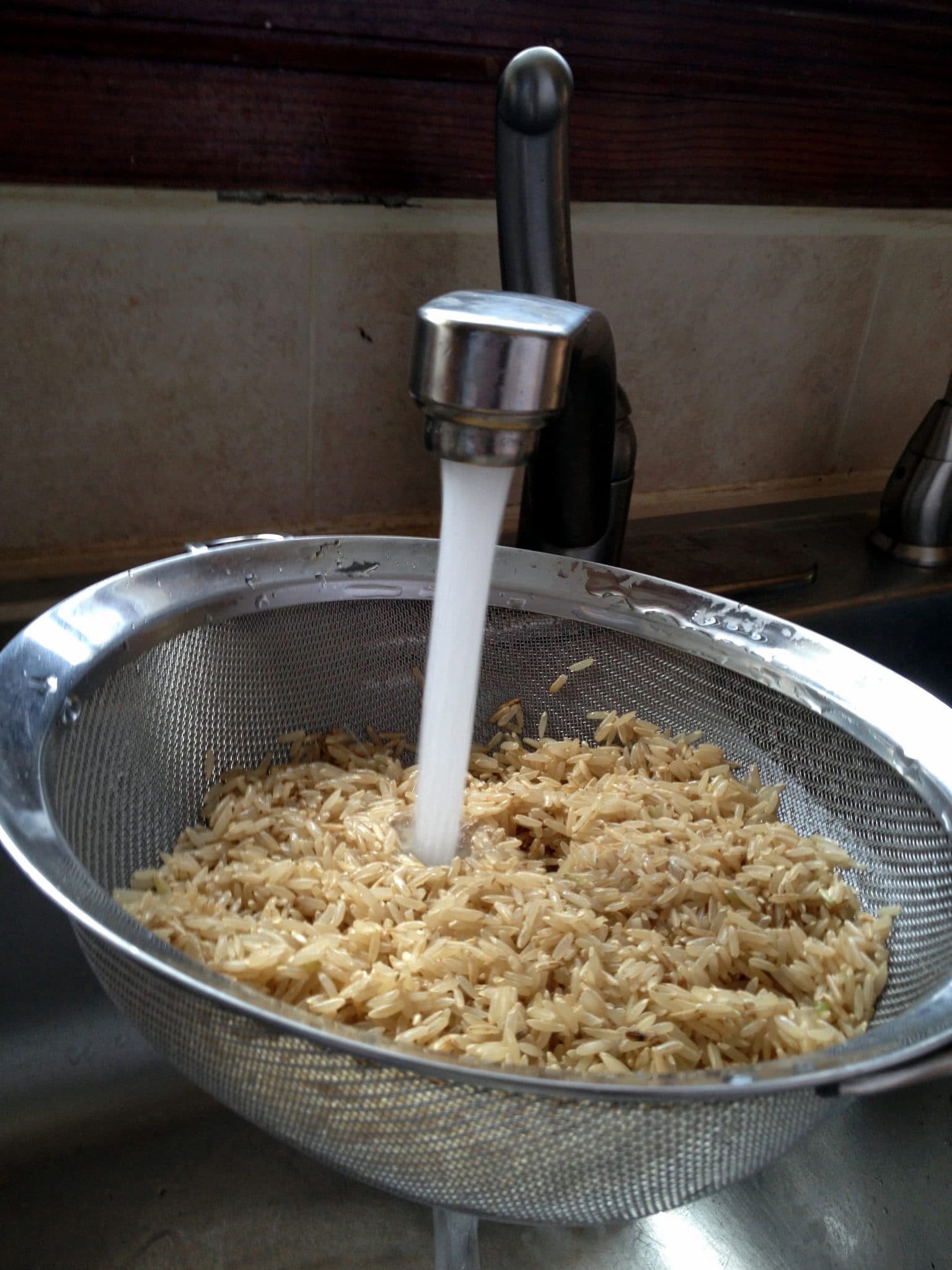
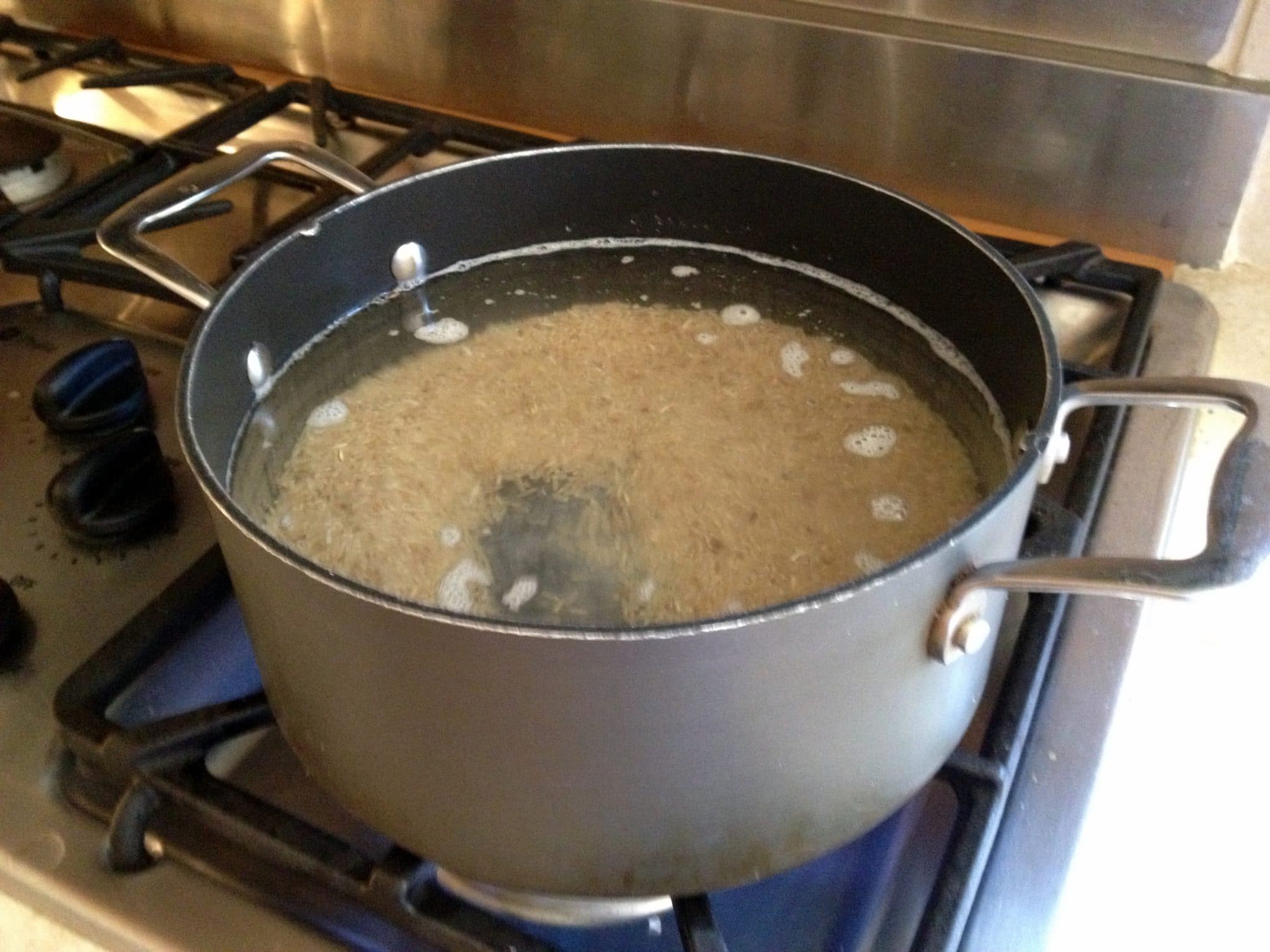
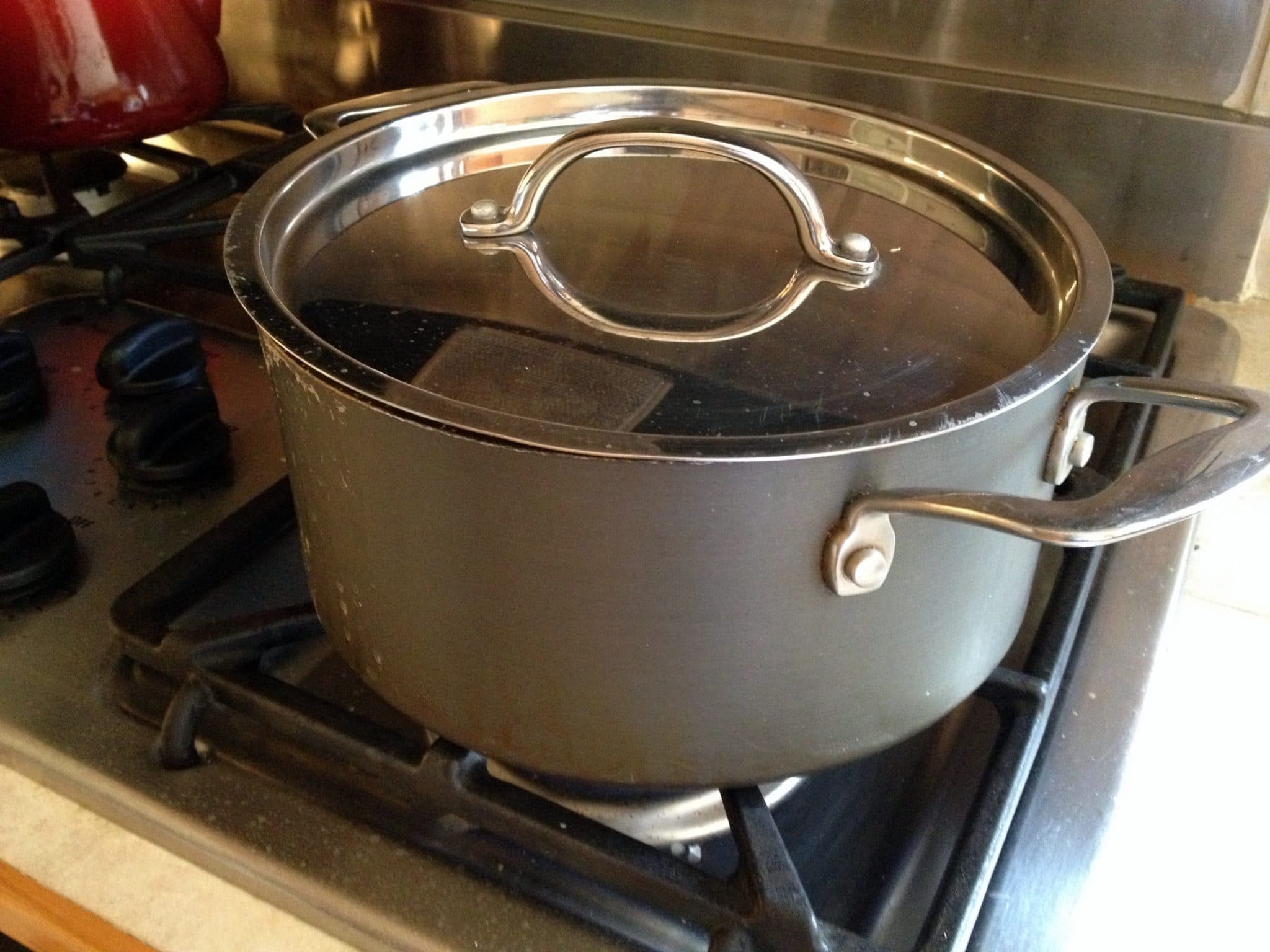
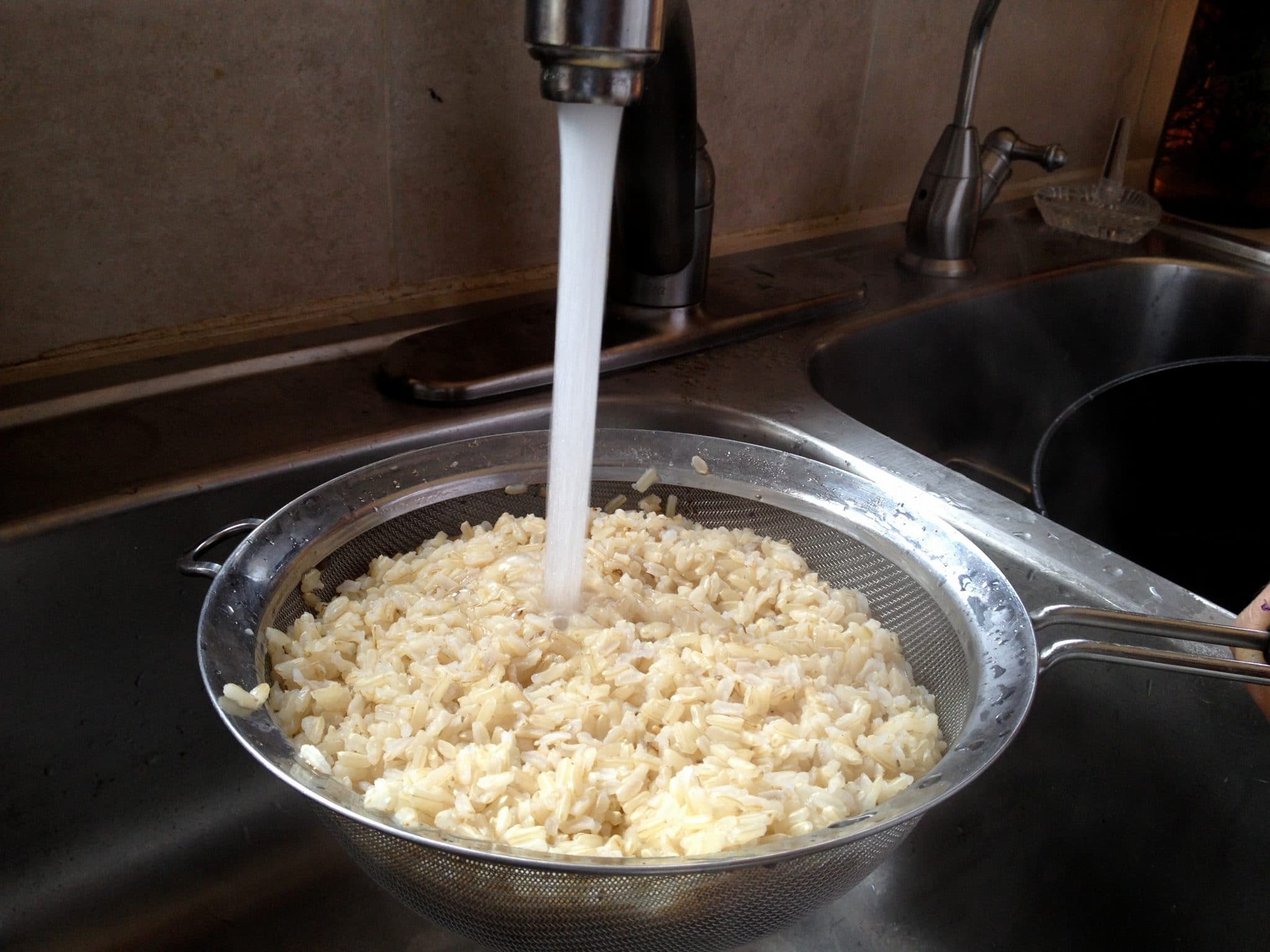
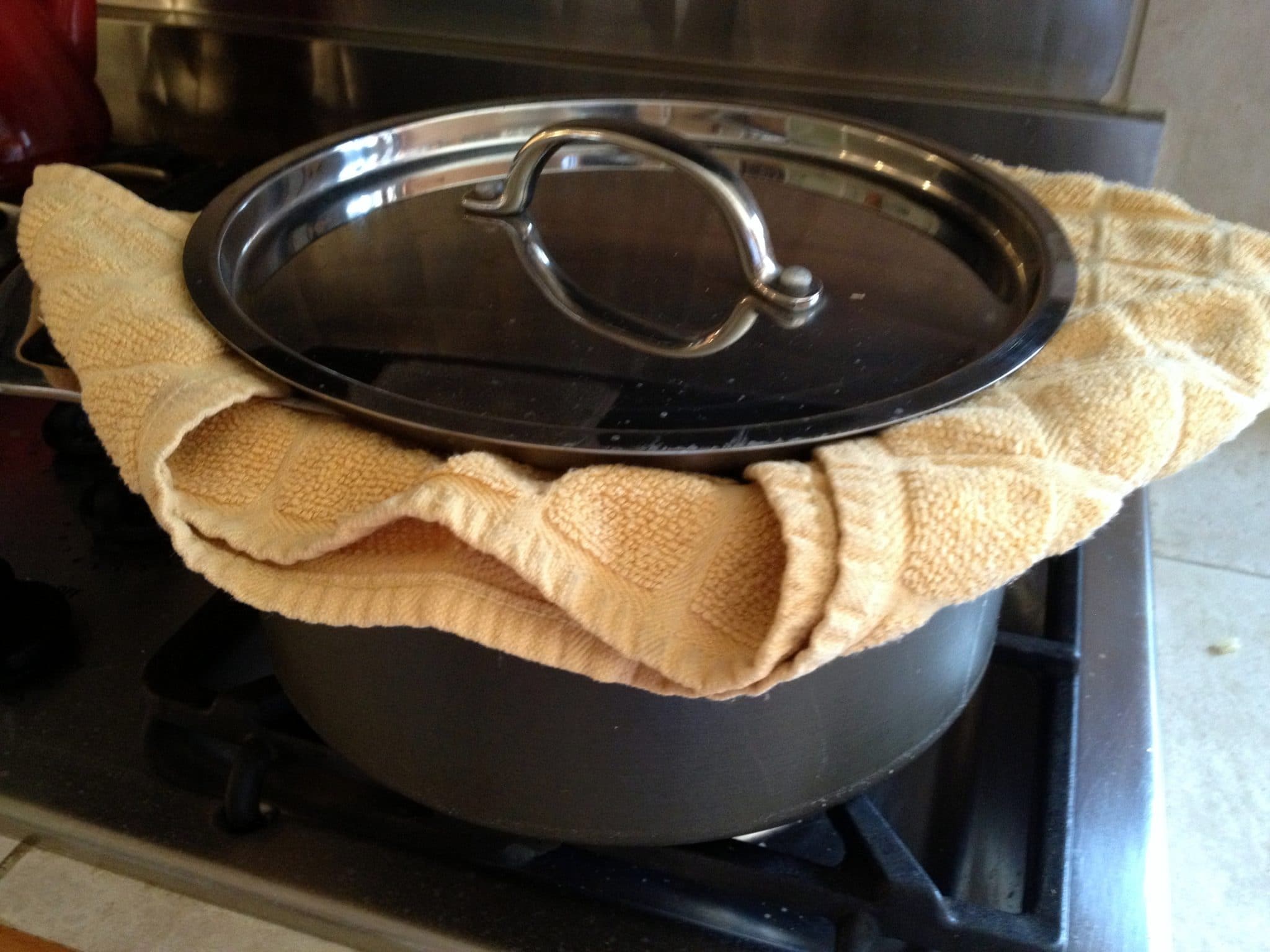
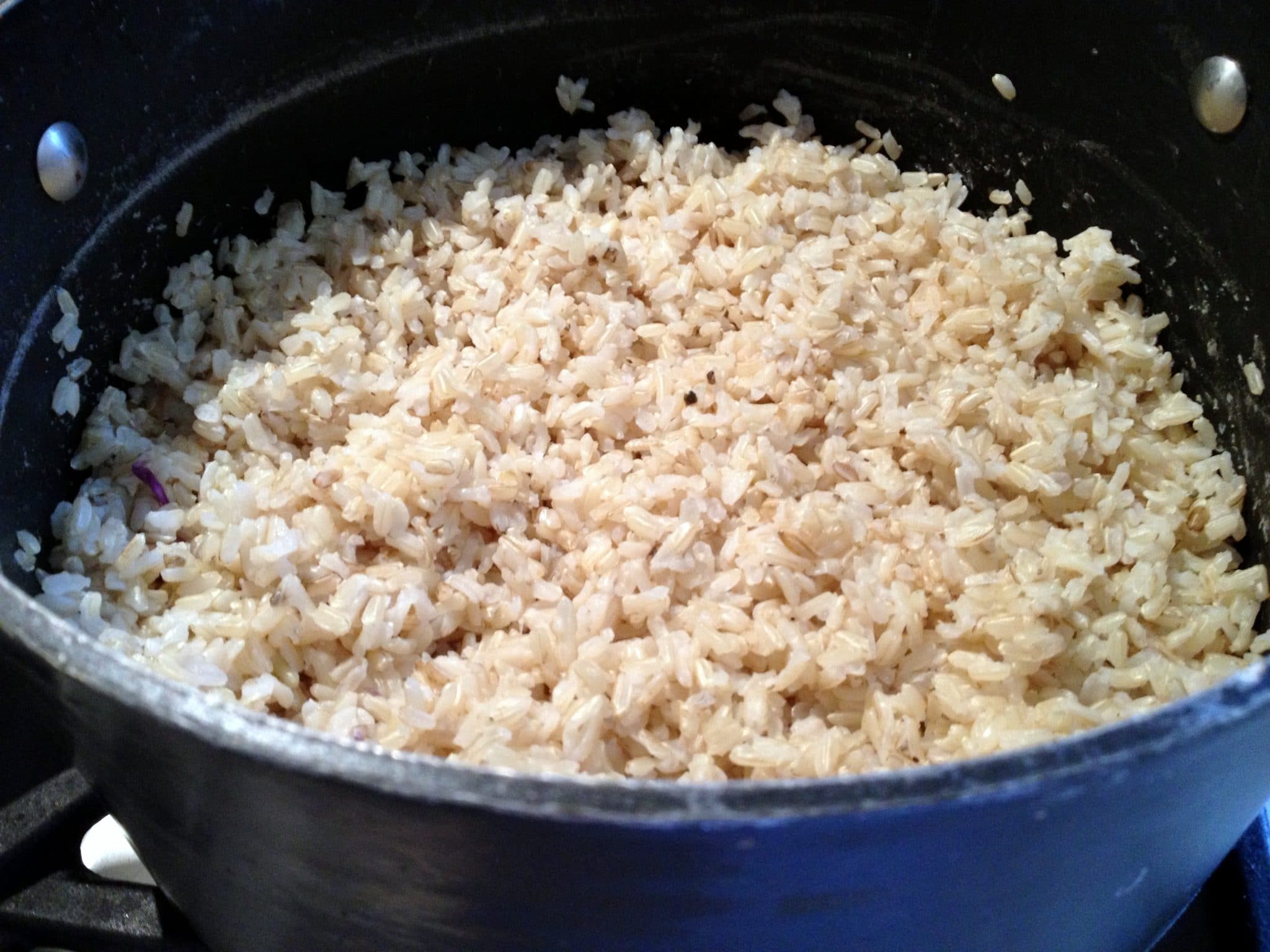

Does this go for organic rice too? I’m sure they can’t always control the arsnic levels in their water, but it should be better.